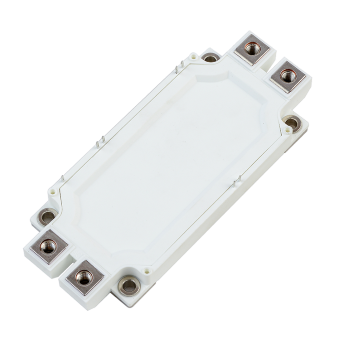PV-Wind: IGBT Module Applications and Selection Guide for Wind Power Converters
 2025-08-04 17:12:00
2025-08-04 17:12:00 6
6The wind power converter is a core component of wind turbines, playing a key role in power conversion. Its task is to convert the variable-frequency, variable-voltage electrical energy generated by the wind turbine generator into fixed-frequency, fixed-voltage electrical energy that meets grid requirements, thereby enabling grid-connected power generation. As wind power converters endure high-voltage and high-current impacts, their reliability is directly related to the safe operation and power generation efficiency of wind turbines.
Wind power converters typically consist of three parts: a rectifier, a filter, and an inverter. The rectifier converts the alternating current (AC) generated by the wind turbine generator into direct current (DC), while also performing constant current limiting. The filter is primarily used to remove high-frequency harmonics and noise signals from the DC power to avoid interference with the grid. The inverter then converts the rectified and filtered DC signal back into an alternating current (AC) signal.
The main components of a wind power converter include:
**Power Module**: The power module is the core component of the converter. Composed of semiconductor devices such as IGBTs and GTOs, it performs the power conversion.


I. Core Challenges and Solutions for Wind Power Converters**
1. Core Requirements
High Voltage Stress: DC-Link voltage in wind systems reaches 1,100–1,500V, requiring 1,700V-rated components.
High Current Demand: Peak currents exceed 1,000A for 3–6MW turbines, necessitating IGBTs with high current-carrying capacity.
Harsh Environments: Exposure to offshore salt spray corrosion and extreme temperature cycling (-40°C to 50°C).
High Reliability Requirements: 20-year lifecycle with MTBF >150,000 hours.
2. HGF600MP170X100-EconoDUAL3 IGBT Module Solution
1,700V Voltage Rating + 600A Continuous Current: Supports 3–6MW wind converters with redundant design for enhanced safety.
Ultra-Low Thermal Resistance (0.037K/W): Enables natural cooling at 600A@85°C, eliminating liquid cooling costs.
175°C Junction Temperature Capability: No derating at high temperatures, boosting power generation efficiency by 3%–5%.
10μs Short-Circuit Withstand: Protects systems during grid faults, minimizing downtime losses.
Technical indicators | HGF600MP170X100 |
VCES/IC | 1700V / 600A |
Rth(j-c) | 0.037K/W |
Ets | 368mJ@150℃ |
Tj | -40℃~175℃ |
III. Compatible Systems and Scenarios
DFIG/PMSG Wind Turbines: 3–6MW
Energy Storage Converters: Optimized for high switching frequencies
Offshore/Onshore Wind Power: Salt spray, extreme cold, and dust environments











